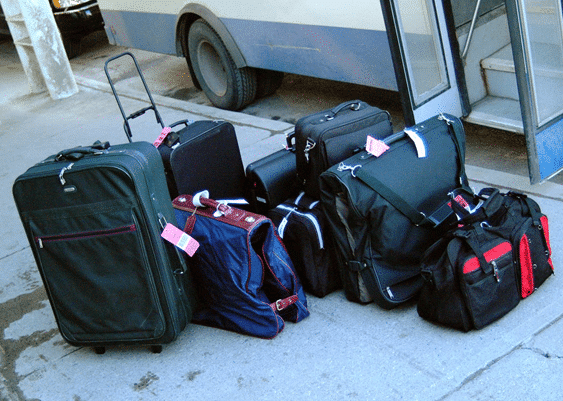We may earn a commission if you buy through some of the links on this page, at no cost to you. Advertising policy
If you haven’t flown in the past few years or perhaps if you don’t fly that often, you may be surprised to learn that standby flights – that old tried and true tactic to save money on airfare – have changed drastically. No longer available as an option for passengers without tickets (except in certain cases), flying standby has in many cases become limited to:
- Ticketed passengers who want to take an earlier or later flight than scheduled (“go-show”)
- Passengers who have missed a flight, either voluntarily or involuntarily
- Passengers (with or without frequent flyer program status) who desire an upgrade
- Airline employees, and in many cases their friends and family
[box type=’normal’]
How Flying Standby Has Changed
It used to be that you could show up at the airport without a ticket 3-4 hours before the flight you wanted to take. After speaking to a gate agent or ticket agent, your name was placed on the standby list. If there were still seats available once the ticketed passengers were checked in, you were allowed to purchase one of them at a substantial discount. This was one of the primary money-saving techniques of budget air travel. If you were willing to suffer some discomfort and inconvenience, you could bag an amazing deal on airfare.
Recent changes in the airline industry have led to reduced seat availability, and many flights are much fuller than they used to be. The seats that used to be available for purchase as standby by the ticketless general public simply aren’t there any more. Flying standby is still possible, but the rules have become much more stringent and it’s probably not going to save you any money. Standby is now technically an unconfirmed same-day flight change, meaning that in nearly every case you must already have purchased a ticket before you are able to fly standby.
Airline policies for standby flights vary widely. Not all airlines offer standby, and when they do, many now charge a fee. Whether you want to take an earlier flight, upgrade the class of service, or in case you miss a scheduled flight, it’s important to know the standby policy of the airline with which you’re flying.
In most cases, the type of fare you purchased will determine your standby priority, or if standby is even available to you at all. For instance, passengers who paid full fare always have standby priority over passengers who purchased a discounted ticket like a 21-day advance purchase fare. Similarly, passengers who have elite status with the airline’s frequent flyer program are often given standby priority over other passengers Some airlines offer standby only to full-fare passengers or passengers with elite status with the airline’s frequent flyer program.
[/box]
[box type=’normal’]
How to Fly Standby: Earlier Flights and Upgrades
While airlines’ policies vary widely with respect to standby flights, these general steps should be followed every time you want to fly standby.
- Familiarize yourself with the standby policy of the airline you’re ticketed with, or of the airline you plan to fly standby with (if you don’t already have a ticket). Make sure to follow the procedure for obtaining standby flights outlined in the policy. Where the policy may differ from this guide, always follow the airline standby policy. Be aware that policies often differ for international and domestic flights.
- 1-2 days before your scheduled flight, check the airline website for seat availability (on the same day as your scheduled flight) for a flight or flights that you wish to take instead of the one you booked. If there are no seats available, choose a different flight. At this point, you can contact the airline and request to make the same-day flight change and pay the appropriate fee (you will now have a confirmed same-day flight change and not a standby ticket). Then, all you have to do is show up and check-in for the new flight, and skip the remaining steps. Or, you can continue with the steps below for free same-day standby.
- Most advice on flying standby often says that when possible, take only carry-on luggage and do not check any bags. This advice is somewhat misleading. ALWAYS pack carry-on luggage only and NEVER take a bag to check when flying standby. The reason is simple: when flying standby, you must be in the boarding area and ready to board the plane when your name is called. This will not happen until all other ticketed passengers have been allocated seats, which often occurs 30 minutes or less before the plane takes off. There is no way you will have time to retrieve checked baggage at this point and still make your standby flight.
- Arrive at the airport at least 3 hours before your desired flight. Immediately ask a ticket or gate agent to place your name on the free same-day standby list. Indicate whether you would like to standby for an earlier flight or for a service class upgrade (available only to passengers with elite status in the airline’s frequent flyer program). If a seat is available on your desired flight, and there are no other standby passengers who have priority over you, you will be assigned a seat on your desired flight or in the desired class.
- Make friends with the agent who is helping you – whether or not you end up on the flight you want depends largely on this person. Be nice. It really, really pays.
- There will be a monitor or set of monitors in the boarding area with the standby and upgrade lists. Check to ensure that your name is on the proper list. Some airlines use abbreviations for privacy (for example, the first 3 letters of passenger last name and first letter of passenger first name, etc.).
[/box]
[box type=’normal’]
How to Fly Standby: Making the Request
Air travel can be extremely stressful, especially when plans change at the last minute. No matter how trying the situation, keep calm and always remember this fact: Airline ticket and gate agents have the power to break the rules. Whether or not you are able to convince them to use this power for good on your behalf depends largely on your attitude and demeanor.
Even if an airline has no “official” standby status or list, airline agents can often get you onto earlier or later flights the same day, sometimes with better routing (like direct flights as opposed to flights with stops). It’s all in how you ask.
[/box]
[box type=’normal’]
How to Fly Standby: Overbooked Flights
Most airlines are relieved when passengers on overbooked flights volunteer to be “bumped” to flights later in the day or even a completely different date. Basically, you’re doing the airline a favor by agreeing to be bumped to the standby list. Use this opportunity to negotiate something for yourself, like an upgrade, better flight routing, lounge access, or even a hotel room and dinner for the night – and we’re not talking Motel 6 and McDonalds, either.
[/box]
[box type=’normal’]
Employee and Family Travel / Buddy Pass Travel
If you are traveling on a Buddy Pass or other form of free or discounted travel, there are some additional things to know. The first is that there are rules you must follow concerning both dress and conduct while flying. You are a “non-rev” passenger, meaning the airline is not making any money on your travel. Therefore, the airline asks that you refrain from conduct or behavior that, among other things, distracts from the attention given by airline staff to full-fare passengers. Your behavior could directly affect the employee that gave you the pass, so it behooves you to become familiar with the airline’s rules about employee travel.
Another important tip about employee travel is to arrive as early as possible. Not only are you flying standby and waiting for empty seats, you have the lowest priority of all the standby passengers. Often, you are offered seats in the order you check in – so go very, very early, if at all possible.
Also, “free” airline travel is never free. As a Buddy Pass traveler, you are responsible for taxes and airport fees, which can run to several hundred dollars per ticket depending on the flights and destination.
Finally, if possible, have your “buddy” – the airline employee – check the seat availability for the flights on the day you want to fly. That way, you will have a better idea of how packed the flights already are. Remember, Buddy Pass travelers are allocated seats after full-fare standby passengers, flight crews en route to work, off-duty pilots, and airline employees on vacation.
Tips for Successful Guest Pass / Buddy Pass /Airline Employee and Family Travel
- Avoid peak travel periods (summer, holidays, etc.) and days of the week (F, Sa, Su).
- Show up for the first flight of the day – you will be higher on the list for later flights.
- Have a backup plan! Standby travel is not guaranteed, and it might happen that you can’t get a seat on a flight even after waiting all day.
- Do not fly standby if you have to be in a certain place at a certain time.
[/box]




